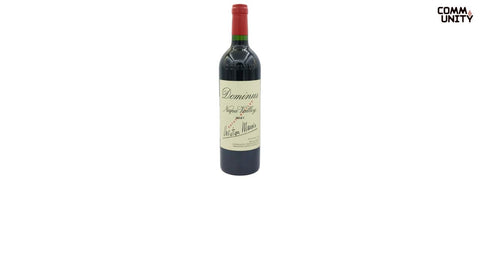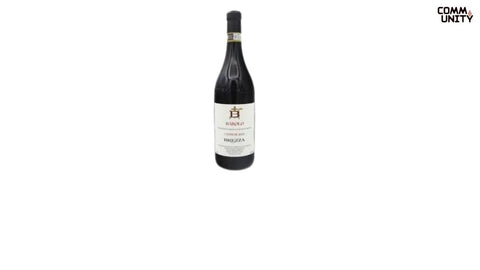Wine lovers from around the world have long debated the pros of red wine and white wine, two of the most popular types of wine. Both have their own loyal following, and have distinct characteristics that cater to different tastes and occasions.
In this article, we’ll delve into the differences between red wine and white wine, examining aspects such as production methods, flavor profiles, health benefits, and ideal pairings.
Read on to learn more about these two types of wine, red wine versus white wine, and how to choose the perfect bottle for your next meal or celebration.

Semeli Feast Moschofilero 2023
The Basics of Red and White Wine Production
The most obvious difference between red wine and white wine lies in the grape varieties and also the fermentation methods used during production.
Red wine is made from dark-colored grape varieties, including Cabernet Sauvignon, Shiraz, Malbec, Merlot, Pinot Noir, etc. The skins of these grapes are left in contact with the juice during fermentation, which imparts the rich color and tannins that are characteristic of red wines.
In contrast, white wine is typically made from green or yellow grapes like Chardonnay, Sauvignon Blanc, Chenin Blanc, Riesling, and many more. During the production of white wine, the grape skins are removed before fermentation, allowing the juice to remain clear and light in color. This process results in a wine that is generally crisper and fresher compared to its red counterpart.
There are some wines that can be made either red or white. If you have this question like most other people: “is marsala wine red or white?,” here’s what you need to know: Marsala wine can be either white or red. Although widely used as a cooking oil, some qualities of Marsala, aged between one to five years, like Fine, Superiore, and Vergine, are also great for sipping.
Fermentation
Another significant difference between red and white wines is the fermentation process.
In red wines, grapes are fermented along with their skins, which contribute tannins and additional compounds to the wine, giving it more structure and complexity.
White wines, on the other hand, are fermented without the skins, leading to a cleaner, lighter style of wine.
Aging
The aging process also varies in red wine versus white wine.
Red wines are often aged in oak barrels, which add flavors like vanilla, spice, and smoke. This aging process enhances the complexity of red wine, allowing it to develop deeper flavors over time. They can age longer because of the presence of natural preservatives like tanning.
Coming to white wines, they’re typically aged in stainless steel tanks to preserve their freshness and fruitiness. Some white wines, such as Chardonnay, may be aged in oak barrels to add richness, but this is less common than with red wines.
Flavor Profiles: Red Wine vs. White Wine
The flavor profiles of red and white wines are quite diverse, just like red grapes and white grapes are.
Red wines tend to have a fuller body with deeper, bolder flavors, often with notes of berries, cherries, and plums. They can also have more complex flavors like chocolate, spices, and earthy undertones. These flavors are largely influenced by the grape variety, as well as the aging process in oak barrels.
Considering white wines, these are typically more refreshing and crisp, with flavors ranging from citrus fruits like lemon and lime to tropical fruits such as pineapple and mango. Some white wines, like Chardonnay, can have a buttery or oak-aged flavor, while others, like Sauvignon Blanc, are known for their grassy notes.
While red wines are often described as having a fuller body, white wines are generally lighter with a cleaner finish.
Pairing Wines with Food
One of the most enjoyable aspects of both red and white wines is their ability to complement food, albeit different kinds.
The right wine pairing can elevate the flavors of both the food and the wine, creating a wonderful dining experience.
Here are some general guidelines to help you with the right pairings:
Red Wine Food Pairings
-
Bold Red Wines (e.g., Cabernet Sauvignon, Malbec): These wines pair well with rich, fatty meats like steak, lamb, and barbecued ribs. The tannins in bold reds help to cut through the fat and enhance the flavors of the meat.
-
Medium-Bodied Reds (e.g., Merlot, Sangiovese): These wines work well with pasta dishes, roast chicken, and grilled vegetables. The smoother tannins and fruit-forward flavors make them versatile for a variety of dishes.
-
Light Reds (e.g., Pinot Noir, Beaujolais): Lighter reds are perfect for salmon, duck, or charcuterie. Their delicate flavors won’t overpower the food, allowing the dish to shine.
White Wine Food Pairings
-
Crisp, High-Acidity Whites (e.g., Sauvignon Blanc, Pinot Grigio): These wines are ideal for seafood, sushi, and salads. Their acidity cuts through the richness of dishes like creamy pasta or fried foods.
-
Rich, Full-Bodied Whites (e.g., Chardonnay, Viognier): These wines pair wonderfully with lobster, grilled chicken, and creamy dishes. The fuller body and oaky flavors complement the richness of the food.
-
Aromatic Whites (e.g., Riesling, Gewürztraminer): These wines are excellent with spicy food, such as Thai or Indian cuisine. Their sweetness balances the heat and enhances the flavors of the dishes.
Wine Temperature: Serving Red and White Wines
The ideal serving temperature for wine can greatly affect its flavor and overall enjoyment. Red wines are typically served slightly cooler than room temperature, between 62°F-68°F, which allows the wine to open up and reveal its full range of flavors. However, lighter reds, such as Pinot Noir, are best served slightly cooler, around 55-60°F (13-15°C).
White wines are best served between 49°F-55°F, the slightly-warmer-than-fridge temperature helps preserve their refreshing acidity and crispness.
Which One is Right for You?
Before considering which one to buy, ensure that you’re buying from a legitimate store that offers high-quality red wines and white wines from top brands. Community Wine and Spirits offers all types of wines, from regulars to rare finds, in one place. Shop wine online for red, white, sparkling, orange, or rosé wine, or visit the store for a more personalized shopping experience.
If you’re wondering, “is red wine or white wine better for you?,” here’s what you need to know: as both reds and whites are very popular and offer their own characteristics, choosing between red wine and white wine ultimately comes down to your personal preference and the occasion.
When it comes to food pairings, red wine is perfect for rich, hearty meals, while white wine shines with lighter, fresher dishes. Each type of wine offers a unique set of flavors, health benefits, and pairing possibilities, making them both worthy of a place in your wine collection or an occasional consumption!
Whether you prefer the boldness of a Cabernet Sauvignon or the crispness of a Chardonnay, the key is to opt for the wine that brings the most pleasure to your palate. Experiment with different wines to discover your ideal wine.


